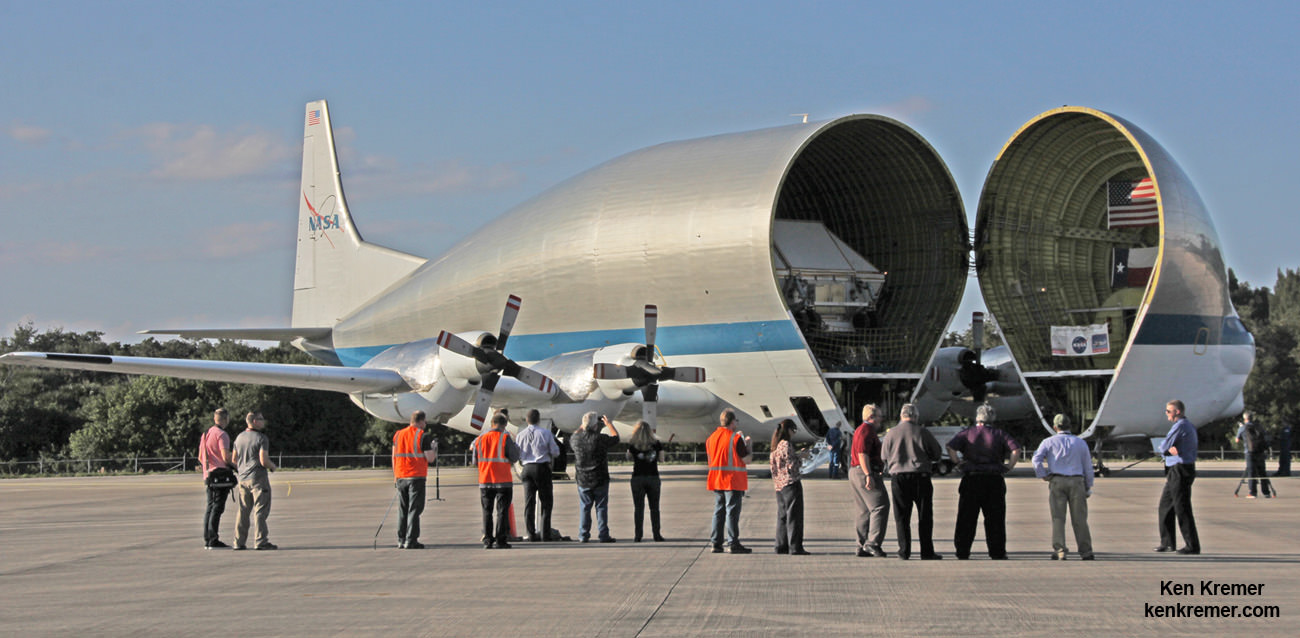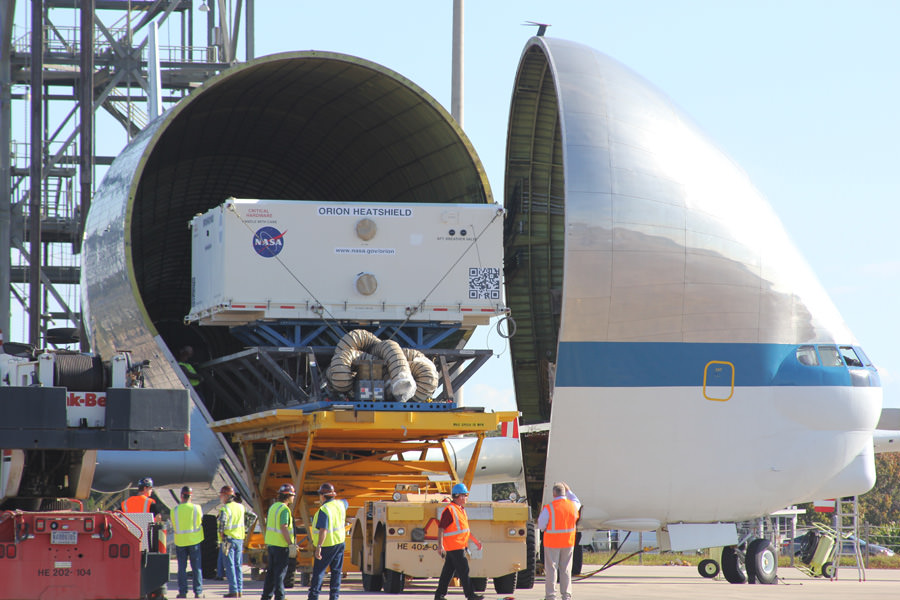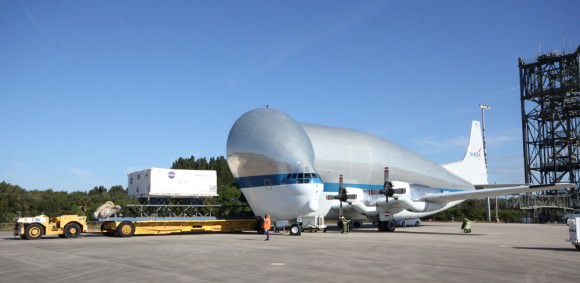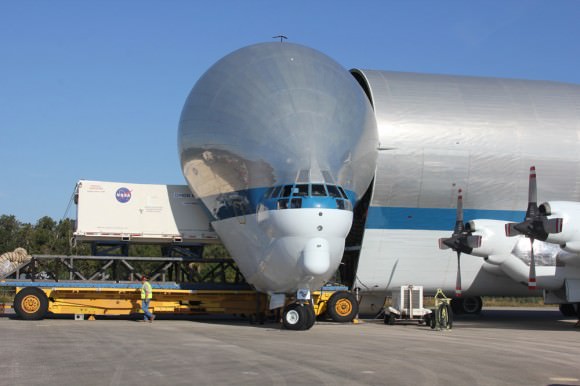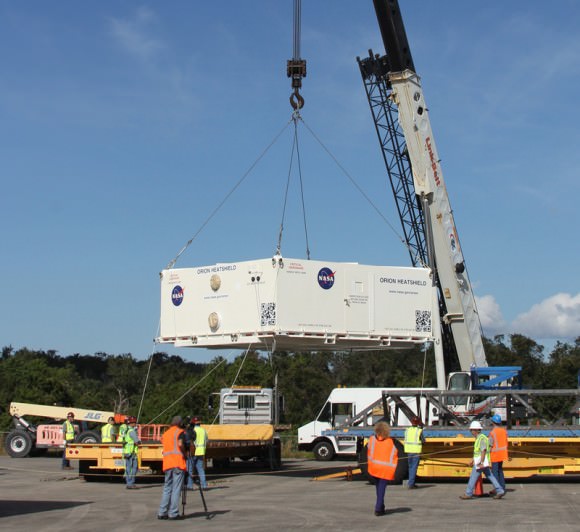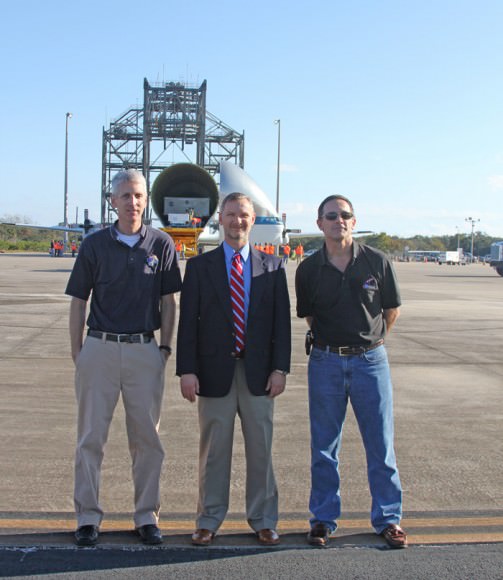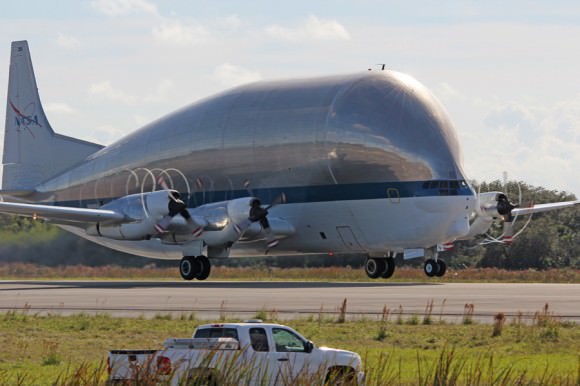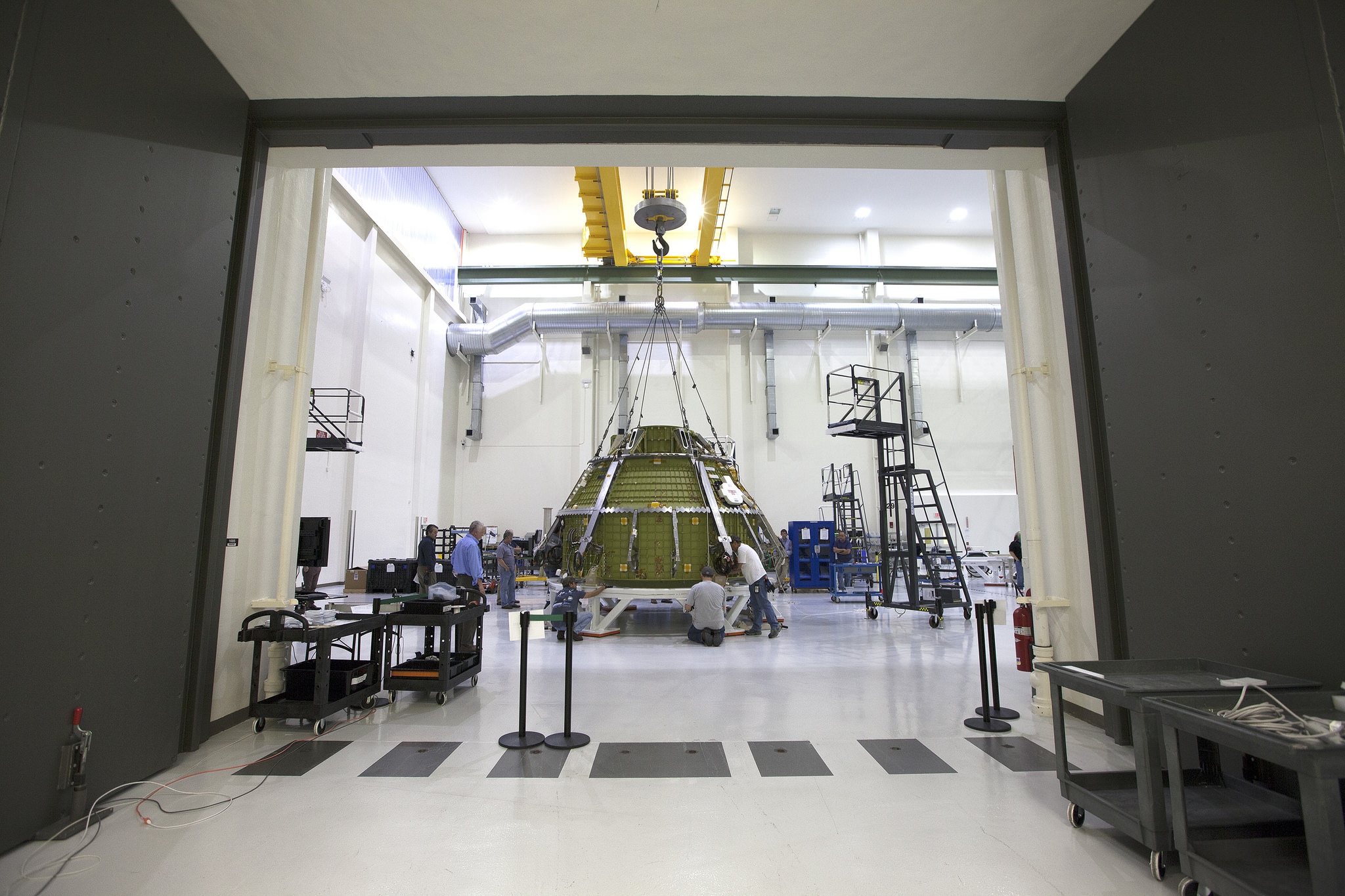
The next Orion crew module in line to launch to space on NASA’s Exploration Mission-1 (EM-1) has passed a critical series of proof pressure tests which confirm the effectiveness of the welds holding the spacecraft structure together.
Any leaks occurring in flight could threaten the astronauts lives.
Engineers and technicians conducted the pressure tests on the Orion EM-1 pressure vessel, which was welded together at NASA’s Michoud Assembly Facility in New Orleans and then shipped to NASA’s Kennedy Space Center in Florida just 3 months ago.
The pressure vessel is the structural backbone for the vehicles that will launch American astronauts to deep space destinations.
“This is the first mission where the Orion spacecraft will be integrated with the large Space Launch System rocket. Orion is the vehicle that’s going to take astronauts to deep space,” NASA Orion program manager Scott Wilson told Universe Today.
“The tests confirmed that the weld points of the underlying structure will contain and protect astronauts during the launch, in-space, re-entry and landing phases on the Exploration Mission 1 (EM-1), when the spacecraft performs its first uncrewed test flight atop the Space Launch System rocket,” according to a NASA statement.
After flying to KSC on Feb 1, 2016 inside NASA’s unique Super Guppy aircraft, this “new and improved” Orion EM-1 pressure vessel was moved to the Neil Armstrong Operations and Checkout (O&C) Building for final assembly by prime contractor Lockheed Martin into a flight worthy vehicle.

Since then, technicians have worked to meticulously attach hundreds of strain gauges to the interior and exterior surfaces of the vehicle to prepare for the pressure tests.
The strain gauges provide real time data to the analysts monitoring the changes during the pressurization.
Orion was moved to a test stand inside the proof pressure cell high bay and locked inside behind large doors.
Lockheed Martin engineers then incrementally increased the pressure in the proof testing cell in a series of steps over two days. They carefully monitored the results along the way and how the spacecraft reacted to the stresses induced by the pressure increases.
The maximum pressure reached was 1.25 times normal atmospheric pressure – which exceeds the maximum pressure it is expected to encounter on orbit.
“We are very pleased with the performance of the spacecraft during proof pressure testing,” said Scott Wilson, NASA manager of production operations for the Orion Program.
“The successful completion of this test represents another major step forward in our march toward completing the EM-1 spacecraft, and ultimately, our crewed missions to deep space.”
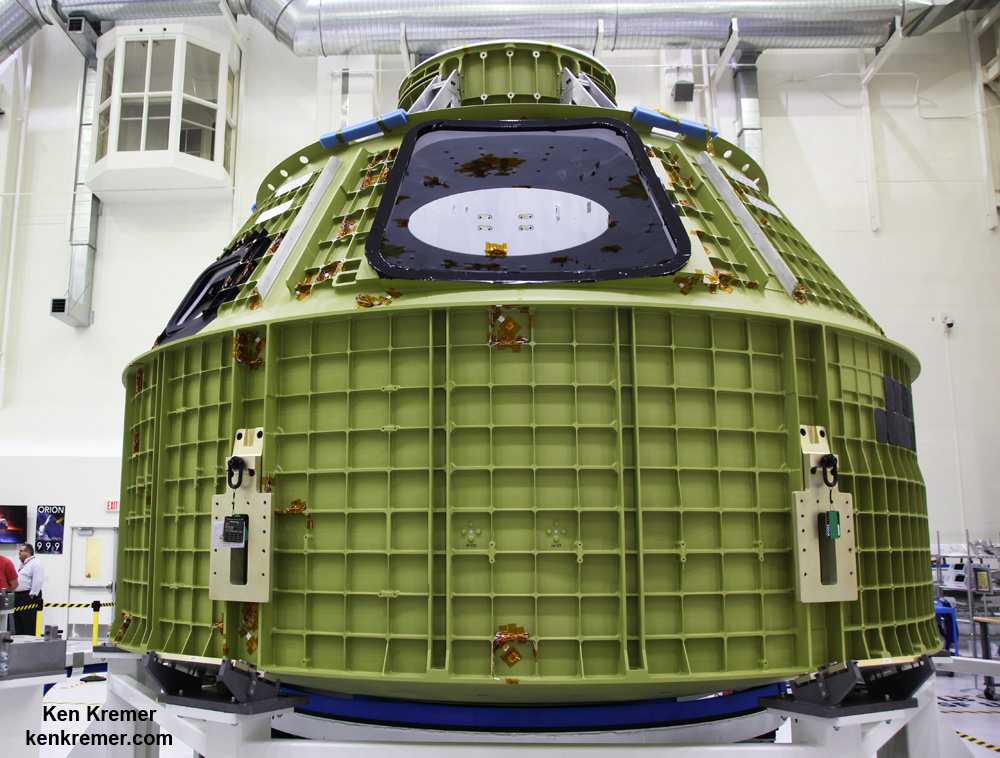
With the pressure testing satisfactorily completed, technicians will move Orion back to birdcage assembly stand for the “intricate work of attaching hundreds of brackets to the vessel’s exterior to hold the tubing for the vehicle’s hydraulics and other systems.”
To prepare for launch in 2018, engineers and technicians from NASA and prime contractor Lockheed Martin will spend the next two years meticulously installing all the systems amounting to over 100,000 components and gear required for flight.
This particular ‘Lunar Orion’ crew module is intended for blastoff to the Moon in 2018 on NASA’s Exploration Mission-1 (EM-1) atop the agency’s mammoth new Space Launch System (SLS) rocket, simultaneously under development. The pressurized crew module serves as the living quarters for the astronauts comprising up to four crew members.

EM-1 itself is a ‘proving ground’ mission that will fly an unmanned Orion thousands of miles beyond the Moon, further than any human capable vehicle, and back to Earth, over the course of a three-week mission.
The 2018 launch of NASA’s Orion on the unpiloted EM-1 mission counts as the first joint flight of SLS and Orion, and the first flight of a human rated spacecraft to deep space since the Apollo Moon landing era ended more than 4 decades ago.
Orion is designed to send astronauts deeper into space than ever before, including missions to the Moon, asteroids and the Red Planet.
Stay tuned here for Ken’s continuing Earth and Planetary science and human spaceflight news.
